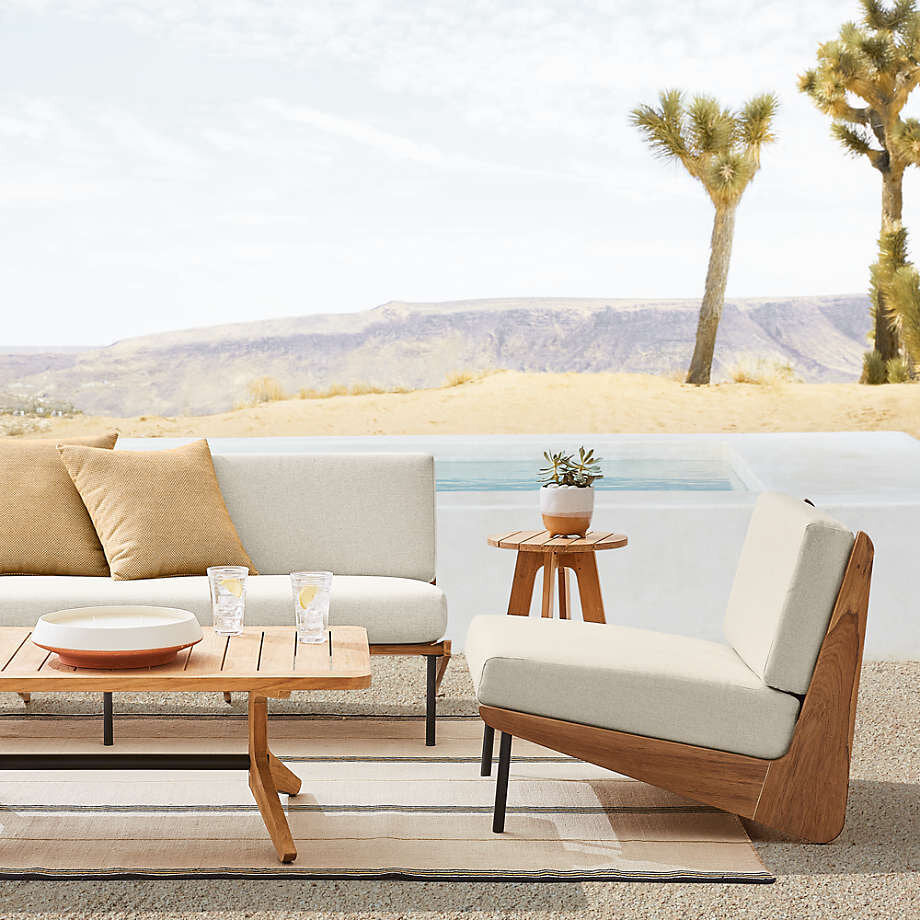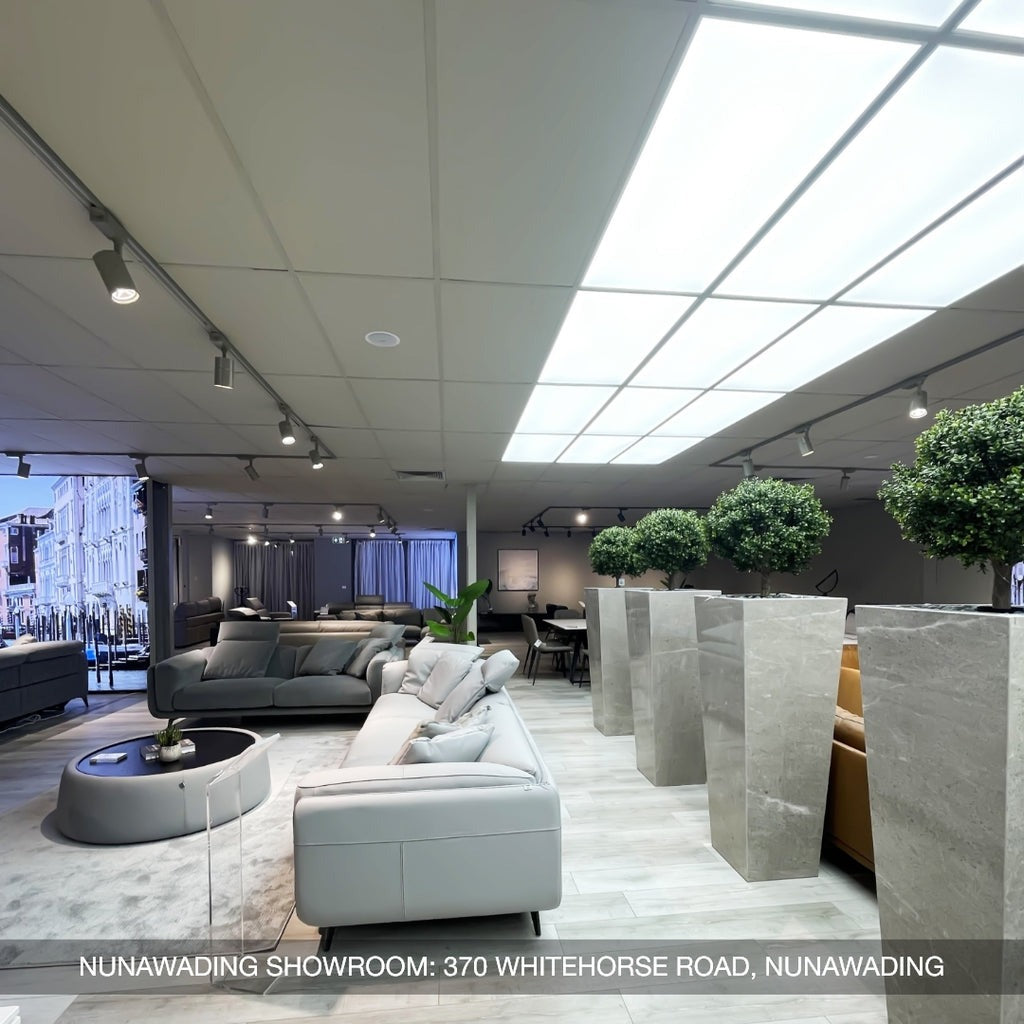In today's environmentally conscious world, the concept of eco-friendly furniture has taken center stage. As sustainability and ethical living gain importance, eco friendly furniture materials have emerged as key players in the interior design landscape. These furnishings are more than just aesthetically pleasing; they're designed with the planet's well-being in mind.
This guide offers valuable insights into the realm of exploring the use of sustainable materials, responsible production methods, and the overall impact on our environment. Join us, we will provide you with essential knowledge to make eco-conscious choices for your living spaces.
What Is Eco Friendly Furniture?
Eco-friendly furniture is crafted from sustainable materials that can be rapidly renewed, like bamboo. These eco-conscious materials encompass recycled resources and responsibly sourced wood. Notably, eco-friendly furniture production prioritizes the absence of toxic chemicals or volatile organic compounds (VOCs). This commitment extends to efficient resource utilization and the use of non-toxic or minimal packaging materials.

One of the key features of eco-friendly furniture production is the avoidance of toxic chemicals and volatile organic compounds (VOCs).
Furthermore, eco-friendly furniture manufacturers strive to minimize their carbon footprint during the shipping and delivery process. Wondering, "What is eco friendly furniture made of?" It's a combination of thoughtful material choices and sustainable practices that make these pieces both environmentally responsible and aesthetically appealing.
How to Tell If a Piece of Furniture is Eco-friendly?
Distinguishing eco-friendly furniture from its less sustainable counterparts is crucial, aligning our choices with our values. To achieve this, scrutiny of manufacturer or craftsman-provided information is key, with a focus on FSC or PEFC certifications for environmental management. Certification and categorization of wood, fibers, and plastics based on sustainability are paramount considerations.
The origin of production also merits attention, favoring local or nearby businesses. Eco-conscious luxury sofa for living room undergo meticulous manufacturing processes that prioritize sustainability and recyclability. Mindful packaging practices, reducing plastic usage, should be ascertained. Equally significant is sustainable transport and distribution, aiming to minimize CO2 emissions.
These stringent criteria define eco-furniture, offering myriad advantages, contributing to a more sustainable and environmentally friendly world when diligently adhered to during the manufacturing process.
5 Advantages of Eco-friendly Furniture
Beneficial for Your Well-being
Beneficial for Your Well-being
Eco-friendly furniture and eco-friendly home decor have a significant advantage when it comes to your health. Conventional furniture often contains a surprising array of chemicals that can pose risks to your well-being. This is particularly concerning for children, who are more sensitive to these chemicals.

Eco-friendly alternatives prioritize non-toxic materials and production processes, reducing the presence of harmful substances in your living space.
Formaldehyde, a common culprit, has been scientifically linked to certain types of cancer. Additionally, other chemicals present in typical furniture can lead to irritations, respiratory issues, and hormonal imbalances. Opting for eco-friendly furniture eliminates these concerns and promotes the well-being of you and your family.
Frequently Comes at a Lower Cost
Contrary to common perception, eco-friendly furniture often proves to be a more cost-effective option compared to conventional alternatives. This cost-effectiveness stems from the use of sustainable materials, including recycled resources, which are generally less expensive than processed materials.
Furthermore, the unique textures of eco-friendly materials can add an intriguing dimension to your home decor. As a result, furnishing your home with eco-friendly furniture not only aligns with your budget but also offers a stylish and distinctive touch.
Averts Woodland Depletion
Deforestation, driven by the clearing of forests for industrial purposes like shopping centers and mining operations, continues to be a pressing environmental issue. The furniture industry is a significant consumer of wood, contributing to deforestation.

By opting for eco-friendly furniture crafted from sustainable materials and adopting conscientious recycling practices, individuals can play an active role in the preservation of forests and the overall environment.
Environmental organizations advocate for responsible wood usage. By choosing eco-friendly furniture and being more conscientious about recycling, you can actively contribute to the preservation of forests and the environment.
Poses Minimal Harm to The Ecosystem
Eco-friendly furniture is crafted with a focus on minimizing its negative impact on the environment. This commitment includes sourcing wood from renewable and sustainable forests and using environmentally safe chemicals in the production process. Some options are exclusively made from recycled materials, making them an ideal choice for dedicated environmentalists.
Boasts an Appealing Appearance
Eco-friendly furniture has gained popularity as a prevailing trend. Numerous celebrities have embraced this sustainable style, and interior design magazines increasingly feature eco-conscious furnishings. Whether it's bamboo, reclaimed wood, or recycled plastic, eco-friendly furniture boasts a remarkable aesthetic. When paired with the right colors and accessories, it lends your home a unique and impressive look that will captivate your guests.

When thoughtfully paired with the right colors and accessories, eco-friendly furniture has the power to transform your living spaces, imparting a unique and impressive look.
Consider When Buying Eco-friendly Furniture
Check Information in the Label
Check Information in the Label
When purchasing eco-friendly furniture, scrutinizing the label is paramount. It serves as your compass in the labyrinth of sustainable choices. Labels validate claims, offering transparency on material sourcing, revealing the presence of harmful chemicals, and even highlighting energy-efficient production processes.

When shopping for eco-friendly furniture and decor, it's essential to keep an eye out for certifications such as FSC (Forest Stewardship Council) or Greenguard.
Keep an eye out for certifications like FSC or Greenguard, which vouch for adherence to stringent environmental standards. Additionally, labels may indicate recyclability and disposal guidelines, reducing your environmental footprint. Knowledge of local production and fair trade practices can further inform your eco-conscious decision.
Assessing the Manufacturing Process
When seeking the best eco-friendly sofas, it's essential to scrutinize the manufacturing process. Examine brands or retailers that prioritize eco-conscious production methods, emphasize energy efficiency, minimize waste, and responsibly manage byproducts. Transparency in this process underscores their commitment to sustainability and responsible practices.
Researching Trustworthy Retailers
The quest for the ideal eco friendly leather sofa or sustainable seating begins with finding trustworthy retailers. Seek out stores dedicated to environmentally friendly products, complete with a clear sustainability mission. These retailers often curate a selection of eco-conscious furniture, simplifying your search for the perfect sustainable addition to your living space.
Considering Multi-Functional and Space-Saving Designs
Consider eco-friendly leather sofas and other furniture pieces that excel in both form and function. Opting for multi-functional items allows you to maximize your living space while minimizing consumption. Look for pieces like storage ottomans, sofa beds, or dining tables with built-in extensions. These versatile designs not only enhance your home's functionality but also promote sustainable living by reducing the need for additional furniture.

Opting for multi-functional items allows you to maximize your living space while minimizing consumption.
The Most Eco-Friendly Furniture Material
Organic Fabrics
Organic Fabrics
Government certification ensures that specific agricultural systems are utilized in the production of organic fabrics. These systems cultivate and harvest these textiles without the use of GMO seeds and exclude non-biodegradable coatings and harmful chemicals.
Renowned for their durability, these fabrics are an excellent choice for various hospitality applications. Among the four common fabrics prevalent in the furniture industry are hemp, silk, wool, and cotton.
Bamboo
Bamboo stands out as an exceptionally sustainable material for furniture production. Its qualities include robustness, prolific growth, self-regeneration, and rapid maturation. Various furniture elements, such as panels and boards, are crafted from this versatile resource.

Bamboo's eco-friendly attributes make it a popular choice for those seeking sustainable and durable furniture options that minimize the environmental impact.
Cork
Renewable and environmentally friendly, cork enhances any living space. It comprises lightweight bark that is simultaneously soft and incredibly resilient, providing excellent sound and heat insulation—ideal for creating eco-conscious homes.
Cork's versatility shines through as it is employed in crafting an array of furniture pieces, including benches, chairs, nightstands, end tables, and headboards. Though its hand-harvesting process can elevate costs, a growing number of companies are now entering the cork production sphere, potentially lowering prices.
Sustainable Wood
Wood stands as a foundational material for furniture crafting. In the realm of eco-friendly furniture, it's imperative that the wood originates from sustainably managed forests, which champion tree replanting and combat illegal logging, thus averting deforestation. To ascertain the wood's authenticity, the presence of the FSC (Forest Stewardship Council) or PEFC (Programme for the Endorsement of Forest Certification) label is paramount. Varieties of eco-friendly wood encompass:
Pine: Known for its flexibility and strength, pine is a staple in furniture production. Solid pine finds application in crafting shelves, tables, chairs, beds, and eco-friendly couches.
Oak: Recognized for its strength, hardness, density, and resilience, oak wood is often employed to create traditional settings that exude durability and solidity.

Recognized for its strength, hardness, density, and resilience, oak wood is often employed to create traditional settings that exude durability and solidity.
Beech: Hard and weighty, beech wood's uniform texture lends itself well to varnishing and polishing, resulting in high-quality furniture. The Archie sofa by Pau, constructed from beech and pine wood sourced from sustainable European forests, is a notable example.
Hevea: The rubber tree, hevea, has emerged as a sustainable substitute for exotic woods in interior decor. Its excellent characteristics make it a pleasing material to work with, yielding aesthetically pleasing results.
Animal fibers
Sourced from organic farms, animal-derived fibers are valued for their versatility. Common options include:
Wool: Typically sourced from sheep, wool efficiently absorbs moisture, providing exceptional warmth. Its primary use lies in stuffing, although upholstery applications are not uncommon.
Silk: With its softness, lightness, lustrous quality, and high tensile strength (though limited elasticity), silk is celebrated for its spectacular natural sheen and resilience.
Vegetable fibers
Derived from organic plantations, vegetable fibers undergo manufacturing processes devoid of chemicals. These fibers serve multiple purposes, from furniture composition to stuffing, upholstery, and padding. Prominent vegetable fibers include:
Wicker: Renowned for its lightweight yet sturdy nature, wicker finds favor in mobile furniture pieces, such as patio or garden furniture.
Rattan: Highly pliable, rattan is extensively used for crafting outdoor furniture, offering sustainability through natural recycling.

Highly pliable, rattan is extensively used for crafting outdoor furniture, offering sustainability through natural recycling.
Bamboo: Notably resilient to moisture with a hardness akin to oak, bamboo boasts a distinctive appearance attributed to its circular trunk structure.
Cotton: Employed for stuffing seats of sofas and chairs, cotton also finds application in upholstery.
Linen: Recognized for its strength and minimal elasticity, linen serves as a superb thermal conductor, yielding fresh and lightweight fabrics.
Conclusion
In summary, eco-friendly furniture embodies a commitment to sustainable living, offering a harmonious blend of style and conscientiousness. From responsibly sourced wood and organic fabrics to innovative materials like bamboo and cork, the choices are diverse. These pieces not only enhance your living spaces with their aesthetic appeal but also champion environmental responsibility.
By selecting eco-friendly furniture, you're not only investing in the longevity of your home decor but also contributing to a healthier planet. It's a conscious choice that aligns with a greener future, reflecting a growing awareness of the need to tread lightly on the Earth while enjoying the comforts of modern living.





